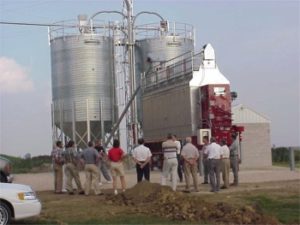
Harvesting Corn: What Grain Moisture Should I Harvest Corn At?
Picking the Best Grain Moisture for Corn Harvest Corn growers are always concerned about the costs associated with drying corn …



El inglés es el idioma de control de esta página. En la medida en que haya algún conflicto entre la traducción al inglés y la traducción, el inglés prevalece.
Al hacer clic en el enlace de traducción se activa un servicio de traducción gratuito para convertir la página al español. Al igual que con cualquier traducción por Internet, la conversión no es sensible al contexto y puede que no traduzca el texto en su significado original. NC State Extension no garantiza la exactitud del texto traducido. Por favor, tenga en cuenta que algunas aplicaciones y/o servicios pueden no funcionar como se espera cuando se traducen.
Inglês é o idioma de controle desta página. Na medida que haja algum conflito entre o texto original em Inglês e a tradução, o Inglês prevalece.
Ao clicar no link de tradução, um serviço gratuito de tradução será ativado para converter a página para o Português. Como em qualquer tradução pela internet, a conversão não é sensivel ao contexto e pode não ocorrer a tradução para o significado orginal. O serviço de Extensão da Carolina do Norte (NC State Extension) não garante a exatidão do texto traduzido. Por favor, observe que algumas funções ou serviços podem não funcionar como esperado após a tradução.
English is the controlling language of this page. To the extent there is any conflict between the English text and the translation, English controls.
Clicking on the translation link activates a free translation service to convert the page to Spanish. As with any Internet translation, the conversion is not context-sensitive and may not translate the text to its original meaning. NC State Extension does not guarantee the accuracy of the translated text. Please note that some applications and/or services may not function as expected when translated.
Collapse ▲
Picking the Best Grain Moisture for Corn Harvest Corn growers are always concerned about the costs associated with drying corn …

Determining Yield Potential By Assessing Ears at or Near Dent Stage The following procedures can be used to assess potential …
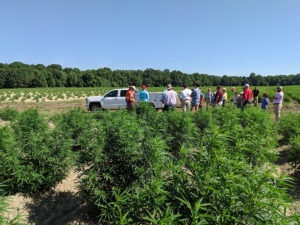
On July 10, 2018, North Carolina Cooperative Extension Agriculture Agents attended an all-day Industrial Hemp Agent Short Course. The …

Extension Agents Becky Spearman (Bladen County), Taylor Chavis (Robeson County), Liz Lahti (Cumberland County), and Randy Wood (Scotland County) recently presented at the National Association …
Wheat and Oat data from the 2017-18 Small Grains OVT tests are now available for viewing. Online tables and …

We are seeing as many, or more breakthroughs in Bt corn this year compared to last. Bollworms that are …

When cotton blooms, it’s time to switch sampling and thresholds for plant bugs. This previous article covered management of …

How has this recent storm and heavy rainfall impacted Corn? In North Carolina persistent and intense rainfall events often occur …

I have received several calls concerning mixing herbicides and acephate (Orthene). With challenging weather comes the urgency to save …

What is the growth stage of the cotton? I cannot stress the importance of this point. Cotton is the …

Article by Dominic Reisig and Angela Post True armyworm has been spotted in northeastern North Carolina wheat over the past …
Wheat crops that are flowering now in northeast NC are at moderate risk of scab. Much of the crop there …
For wheat flowering now, scab risk is low across North Carolina due to recent dry weather. Rain predicted for April 23-28 will …
Wheat scab risk is moderate to high for wheat flowering now in coastal NC counties. These include south Columbus, …
This is the first North Carolina small grain scab risk commentary for the 2018 scab monitoring season. In most of NC, …

In recent years, many growers have noticed an increasing incidence of deer feeding in young cotton. There are many …

As mentioned in the previous article, the past two years have brought significant challenges throughout much of our planting …

At this point in the game, there is no need in predicting what the weather will hold for the …

Tobacco thrips are the most common thrips species that infest North Carolina cotton. Because most tobacco thrips populations are …

The 1st Annual Chatham County Spring Ag Fest on March 24, 2018, was a huge success with an estimated crowd …

This publication has been prepared to acquaint growers, packers, and shippers with the most current …
This publication provides guidelines and recommendations for proper irrigation scheduling of wastewater.
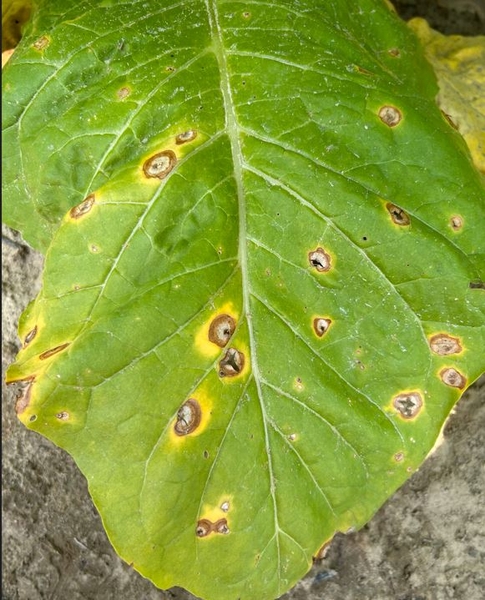
Target spot is a potentially devastating leaf spot disease in tobacco in North Carolina. This …

This factsheet describes the symptoms of an ALS inhibitor herbicide injury.
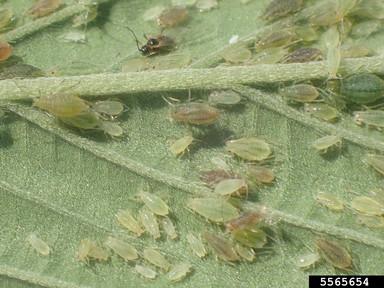
This factsheet discusses the biology, damage, and management of the cannabis aphid in industrial hemp …
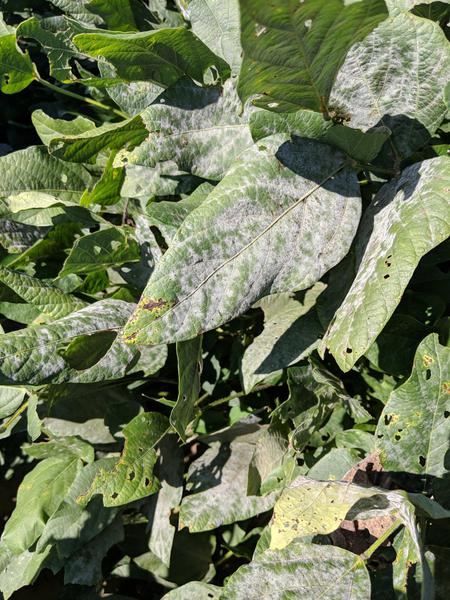
Powdery mildew is a common foliar disease caused by a fungus. The causal agent of …

This factsheet covers the signs, symptoms, and control of early leaf spot in peanuts in …
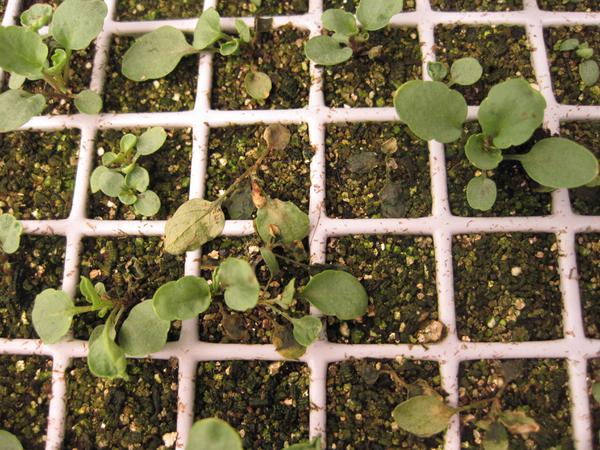
This factsheet offers information on damping off in flower and vegetable seedlings, a result of …